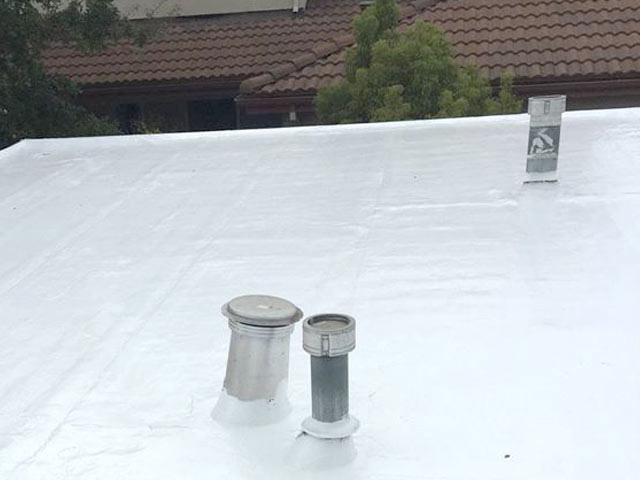What is TPO?
“TPO” stands for Thermoplastic Polyolefin. TPOs are polypropylene (PP) based materials adjusted to provide better malleability than standard PP grades.
It is made from ethylene-propylene rubber and many other filler materials, such as carbon filler, elastomer, talc, or fiberglass.
Benefits/Pros
- For those asking the question, is it toxic?
No, it is an excellent environment-friendly choice for your roofing and will not give out toxic fumes if you are ever unfortunate enough to encounter a fire situation.
- It reflects the UV rays very well, which means it is also resistant to UV rays.
- Good news! It is fungi-resistant! This is because it has excellent water resistance.
- It exceeds the Energy Star requirements and is considered to have a better environmental impact than EPDM.
- And for all those people concerned, can it last through a storm?
Yes, it can. It is durable, strongly resistant to punctures and tears, and can withstand quite an impact.
- It is fairly simple and quick if you were wondering how to install it. TPO comes in the form of large rolls that can be spread out across the roof. So it is quite easy to install.
- It lasts at least 22 years and, at most, 30 years. That’s a longer lifespan than a cat, and those little menaces are supposed to have nine lives!
- It needs only low maintenance besides the occasional inspection and a repair if it is needed.
- It is lightweight, flexible and versatile.
- Another great advantage of TPO is that it can be installed during winter. TPO is first attached to the roof, then sealed down with the heat welders
Simply put, it is a material in which much science is used, and you don’t have to worry about it.
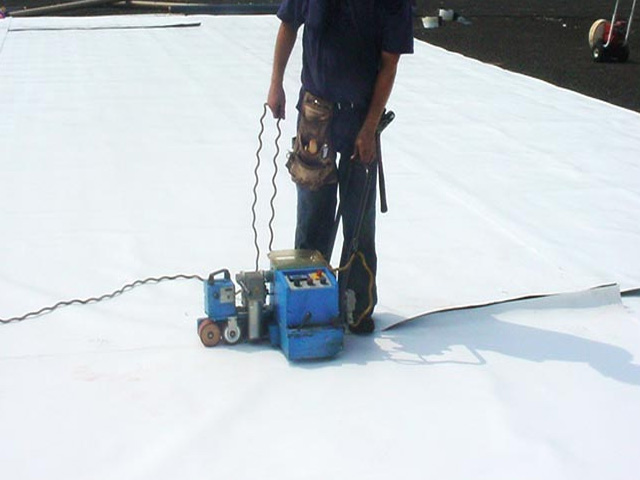
Any Disadvantages?
Since we’ve already told you all the good, it is only fair to tell you all the bad.
- Is it fire-resistant?
While TPO does not release toxic fumes from a fire, it does not mean it is resistant. A fire retardant layer must be placed under it or used in a Ballasted roof system.
- TPO requires special tools for the repairing process. The repair is quite costly; unless you have a degree in roof repair, a professional is always recommended.
- Since TPO is fairly new and there is much room for development, not all brands create good quality TPO. Different brands produce different qualities. Low quality does not last nearly as long.
- Here’s the point that can make or unmake a decision. The price. While TPO is less expensive than PVC, it is more costly than other low-slope roof systems.
- It can get very slippery during wet, frosty, snowy, and icy weather or seasons. So look out if you go up on the roof in those days.
Can you paint TPO?
If someone wants their house to look nice, they will go through the extra work of cleaning and painting, but if you are not, you won’t bother with it.
TPO roofs can be painted using various methods with the help of compatible paint and require surface treatment before painting. But here’s the simplest method.
- Clean the surface and apply a specialty primer.
- Once the primer dries, it is ready for paint application. Ensure that the paint is compatible with the TPO; otherwise, you will ruin and waste the TPO.
- Apply the first paint coat, and from there, apply in layers.
- Avoid painting during rainy weather, before or after (remove ponding water).
- Do not apply the paint coats too thickly since this will lead to the paint cracking and peeling.
As explained above, you need paint compatible with your TPO roofing. So here are some of the paint types we would recommend for a TPO roof:
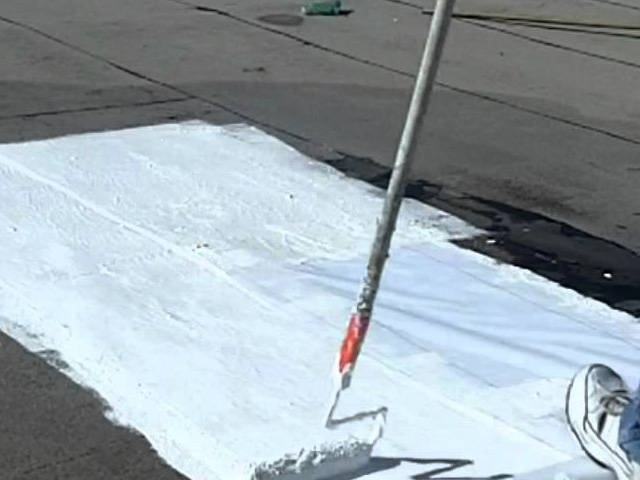
- Latex paint contains fewer volatile organic compounds that are harmful to the environment.
- Water-based acrylic latex has no harmful effects, dries quickly, and has been tested on other surfaces. It is also the most popular option.
- Epoxy paints can be applied without any problem, are durable, and last years.
- Oil or alkyd paints provide a smooth with just one coat (if you do it right anyway) but should only be used when other types are unavailable. That is because they have high levels of Volatile organic compounds.
- Elastomeric paint is claimed and acknowledged as the best paint. It gives you a highly reflective, watertight, and energy-efficient roof. You do not need to use a primer before applying it. This coating system is great for restoring and renewing aged and failing roofs.
Since they restore and extend the roof’s lifespan, silicone and acrylic coating systems are great options for TPO roofing systems.
Like there are diverse painting methods and different paints for TPO paint application, there are also different Surface treatments. To name a few:
- Specialty primer (Can be sprayed, rolled, or wiped on and which we’ve used above)
- Corona treatment (Can be treated by hand or automatically)
- Flame treatment (Can be treated by hand or automated)
Suppose you haven’t done this before and lack the required materials. In that case, we recommend hiring a professional for surface treatment and paint application since they have all the materials required for their profession.
Do not attempt painting your roofs unless you are a professional yourself. A small mistake could damage your roof and waste your investment.
Of course, those who do not like the extra work will be happy to know that TPO comes in various colors like grey, tan, and white, which is the most common.
If you dislike any of the options mentioned, do not worry; some manufacturers make customized colors.
Alternatives to TPO roofing
If you are still deciding what type of roofing to have and want to look at options besides TPO, here are a few recommendations from us!
1. PVC Roofing
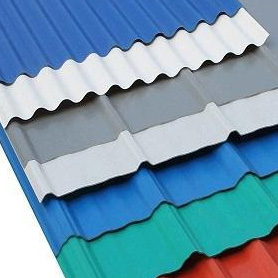
It stands for Polyvinyl Chloride and is a great single-ply roofing solution.
It comprises ethylene and chlorine, derived from processed petroleum, natural gas, and salt. It is more expensive than TPO and lasts up to 30 years with proper maintenance.
2. EPDM
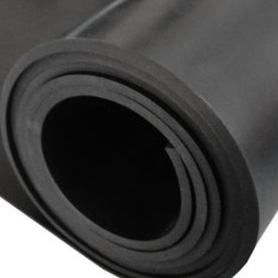
It stands for Ethylene Propylene Diene Terpolymer. It is rubber-based.
It absorbs heat, is resistant to UV rays, and is easy and cost-effective to repair. It lasts up to 50 years if installed correctly.
3. Spray-On Roof (SPF)
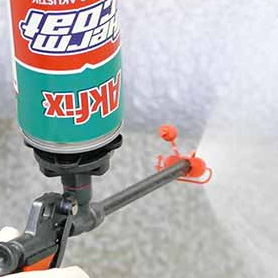
It involves spraying layers of silicone and polyurethane and has been around since 1964.
The SPF stands for Spray Polyurethane Foam. Over the years, foam roofing has outperformed any other roofing system.
The average lifespan is 15 to 20 years, but there are spray foam roofs that have lasted longer than 50. One of its many advantages is that it can be infinitely renewed.
4. FleeceBACK Roofing
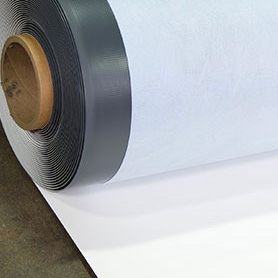
It is a reinforced material made of polyester that can be added to the underside of TPO, PVC, or EPDM. It is used to give the material extra strength.
It is adhered to the roof’s surface using 2-part fast adhesive foam. It is best suited for solar panel applications and roof gardens.
It is also great for buildings requiring low noise during roofing application.
5. Built-Up Roofing
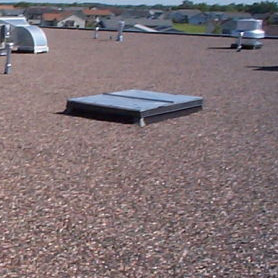
BUR, for short, first appeared in the 1800s. It comprises multiple layers alternating between bitumen (Asphalt) and fabric material; the last layer is topped with rocks or gravel.
It is widely popular among architects and building owners due to its durability.
Depending on the climate and the material, it can last from 20 to 30 years. Some can even last up to 40 years.
6. Modified Bitumen
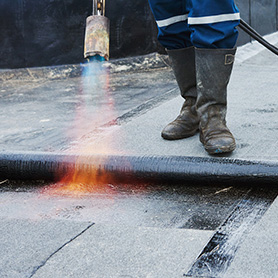
It is a 2-part flat roof system. It was developed in Europe around the 1960s and is considered the evolutionary cousin of the built-up roofing system.
It is made of asphalt combined with polymerized rubber or plastic, then reinforced with fiberglass to create a rugged yet flexible waterproof membrane.

Arthur is a skilled roof worker with over 10 years of experience in the industry. He started his career as an apprentice and worked his way up to become a foreman.
When he’s not working on roofs, John enjoys with his family or writing posts. He is also a passionate cyclist.

